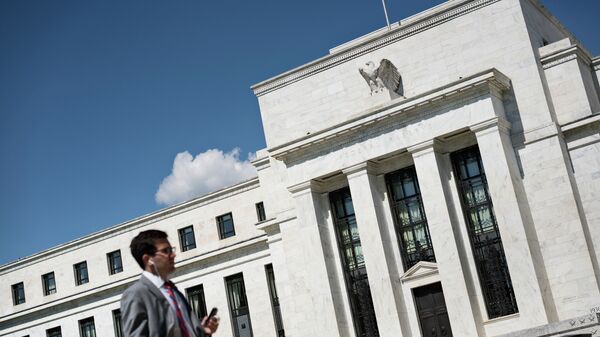Kristian Rouz – After President Donald Trump picked centrist Jerome Powell for the Fed Chair role, the US central bank is poised to change its approach to monetary policy. Higher interest rates and the ongoing policy normalization will provide monetary-side support to President Trump’s tax reform efforts; however, the Fed is seeking to address structural challenges to the US economy.
READ MORE: US Slaps Higher Tariffs on Chinese Aluminum After Dumping Revealed
In this light, San Francisco Fed President John Williams called on global monetary authorities to “rethink” their policy rules. The European Central Bank (ECB), and Bank of Japan (BoJ) still exercise the zero and negative interest rate policies (ZIRP and NIRP, respectively), whilst the Bank of England (BOE) is gradually tightening monetary conditions – only in response to the rampant inflation.
“We will all be better able to contain the next economic recession if we develop approaches that succeed even when many countries are simultaneously constrained by the lower bound,” Williams said. “And that means taking into account the nature of monetary policy spillovers.”
Previously, when a recession hit, a central bank’s first response would be cutting interest rates in order to support domestic lending and consumption. However, neither the ECB nor the BOJ are able to provide such as accommodation in the event case of a new recession at this point. This means these regulators would increase asset purchases in the case of an economic crisis, resulting in devaluations of their respective currencies.
This would result in an even greater trade deficit for the US.
However, the use of such methods in response to a recession could trigger a global shift towards a planned economy.
READ MORE: $8Bln Shock: 10-Minute Gold Selloff Sets Markets in Motion as Price Drops
Price-level targeting is somewhat similar to the widely used inflation targeting, but its main indicator is core prices index (CPI). Price-level targeting considers changes in prices in the past and future years, and provides more certainty of future price dynamics to consumers. This tool is essentially a mild form of price control.
A nominal income target, on its part, is a target level or rate of economic activity over a certain period, non-adjusted for inflation or price changes. Central banks can use other policy tools to reach the target, which makes economic forecasting easier. However, this mechanism might hinder GDP growth in the event of a negative supply shock (e.g. a sudden devaluation in an import-dependent country).
“Each of these alternatives has significant advantages and disadvantages, which need further careful study and discussion,” the Fed’s Williams said.
The ambitious economic reform, proposed by President Trump, requires constant adjustment on the part of the central bank, central bank’s part, meaning the Fed might or might not pursue a steady path of monetary normalization.
Lars Svensson of the Stockholm School of Economics says the existing macroeconomic rules – such as the Taylor rule, proposed by Stanford economist and former Fed candidate John Taylor – are insufficiently flexible. Svensson advocates the so-called “forecast targeting,” which would enable a hypothetical and forward-looking path of monetary policy, which in turn would keep both inflation and unemployment in check.
“In contrast to simple policy rules that rely on very partial information in a rigid way, such as Taylor-type rules, forecast targeting allows all relevant information to be taken into account and has the flexibility and robustness to adapt to new circumstances,” Svensson said.
However, it is “more of a snapshot of the views of the FOMC and not a conscious choice by the FOMC,” Svensson argues. In his view, a more centralized and institutionalized approach to forecasting would be a very useful policy tool.
READ MORE: US Economy Grows 3% in Q3 as Inventories, Trade Offsets Hurricane Woes
This provides further evidence that the global economy might be entering a new era of economic planning – just three decades after the previous one collapsed due to a negative supply shock.






